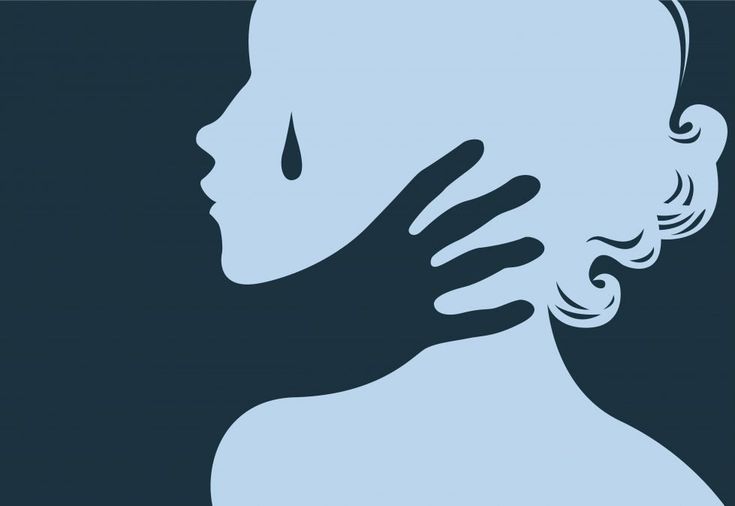What is Domestic Assault?
Domestic assault, often referred to as domestic violence or intimate partner violence, is a pervasive issue affecting individuals and families worldwide. It encompasses a range of abusive behaviors, both physical and psychological, perpetrated by one partner against another within an intimate relationship. This article delves into the intricacies of domestic assault, shedding light on its definition, impact, and avenues for support.
At its core, domestic assault involves any form of violent or coercive behavior inflicted upon a partner within the confines of a domestic setting. This can include physical violence such as hitting, punching, or kicking, as well as emotional abuse, intimidation, and control tactics. The severity of domestic assault can vary widely, ranging from isolated incidents to ongoing patterns of abuse.
Dynamics
Types of Domestic Assault
Domestic assault can manifest in various forms, including physical, sexual, emotional, and financial abuse. While physical violence may be the most visible, other forms of abuse can be equally damaging, leaving lasting scars on victims.
Common Perpetrators and Victims
Perpetrators of domestic assault come from all walks of life and can be of any gender, age, or socioeconomic background. Similarly, victims encompass a diverse range of individuals, although women are disproportionately affected by intimate partner violence. Also, read about What is Passive Communication
Impact on Victims
Physical Effects
The physical repercussions of domestic assault can range from minor injuries to severe trauma, including broken bones, concussions, and internal injuries. Victims may also suffer from chronic pain, disability, and long-term health complications as a result of repeated abuse.
Emotional and Psychological Trauma
In addition to physical harm, domestic assault inflicts significant emotional and psychological trauma on victims. They may experience fear, anxiety, depression, and post-traumatic stress disorder (PTSD), leading to profound psychological distress and impaired functioning.
Recognizing Signs of Domestic Assault
Red Flags to Watch Out For
Various warning signs may indicate a person is experiencing domestic assault, including unexplained injuries, frequent absences from social events, and changes in behavior or personality. It’s essential to remain vigilant and offer support to individuals who may be in abusive relationships.
How to Identify Potential Cases
Identifying domestic assault cases can be challenging, as victims may be hesitant to disclose their experiences due to fear, shame, or feelings of guilt. By creating a safe and supportive environment, friends, family members, and healthcare professionals can encourage victims to seek help and break the cycle of abuse. For more interesting information visit our website urbansoutfitter.com

Legal Aspects of Domestic Assault
Laws and Regulations
Domestic assault is a criminal offense punishable by law in most jurisdictions. Legal statutes typically define domestic assault as the intentional infliction of harm or the threat of harm against a current or former intimate partner.
Legal Protections for Victims
Victims of domestic assault are entitled to legal protections and remedies under the law, including restraining orders, emergency shelters, and access to support services. Legal interventions play a crucial role in ensuring the safety and well-being of survivors and holding perpetrators accountable for their actions.
Seeking Help and Support
Resources Available for Victims
Numerous resources are available to individuals experiencing domestic assault, including hotlines, shelters, counseling services, and legal aid organizations. These support networks offer confidential assistance and guidance to help survivors navigate their options and reclaim their lives.
Support Systems and Organizations
Community-based organizations and advocacy groups play a vital role in providing support and advocacy for victims of domestic assault. By raising awareness, promoting prevention initiatives, and lobbying for policy changes, these organizations contribute to the broader movement to end intimate partner violence.
Breaking the Cycle
Rehabilitation Programs for Perpetrators
Breaking the cycle of domestic assault requires addressing the underlying issues that contribute to abusive behavior. Rehabilitation programs aimed at perpetrators focus on accountability, empathy-building, and developing healthy coping strategies to prevent reoffending.
Preventive Measures
Preventing domestic assault begins with early intervention and education. By promoting healthy relationship dynamics, teaching conflict resolution skills, and challenging harmful gender norms, we can cultivate a culture of respect and equality within our communities.
Psychological Factors
Understanding the Mindset of Perpetrators
To effectively combat domestic assault, it’s essential to understand the psychological factors that drive abusive behavior. These may include a history of trauma, unresolved anger issues, substance abuse, and a sense of entitlement or control over the victim.
Addressing Root Causes
Addressing the root causes of domestic assault requires a multifaceted approach that addresses societal, cultural, and individual factors. This may involve increasing access to mental health services, challenging patriarchal norms, and promoting gender equity in all spheres of life.

Impact on Children
Long-Term Effects on Children Witnessing Domestic Assault
Children who witness domestic assault are profoundly affected by the experience, even if they are not directly subjected to abuse. They may suffer from emotional trauma, behavioral problems, and impaired social development, with long-lasting consequences extending into adulthood.
Breaking the Cycle for Future Generations
Breaking the cycle of intergenerational violence requires early intervention and support for children exposed to domestic assault. By providing trauma-informed care, counseling, and positive role models, we can empower children to heal from their experiences and build healthy relationships in the future.
Community Response
Role of Communities in Combating Domestic Assault
Communities play a crucial role in preventing and addressing domestic assault by fostering a culture of intolerance towards violence and providing support to those affected. By promoting bystander intervention, educating the public, and holding perpetrators accountable, communities can create safer environments for all residents.
Promoting Awareness and Education
Raising awareness about domestic assault is essential for eradicating misconceptions, challenging victim-blaming attitudes, and encouraging bystander intervention. Educational initiatives in schools, workplaces, and community centers can empower individuals to recognize the signs of abuse and take action to support survivors.
Importance of Reporting
Encouraging Victims to Report Incidents
Reporting domestic assault is a critical step towards accessing support services, holding perpetrators accountable, and preventing further harm. However, many victims face barriers to reporting, including fear of retaliation, financial dependence, and social stigma.
Ensuring Accountability
It’s essential to hold perpetrators of domestic assault accountable for their actions through legal and social consequences. By prioritizing survivor safety, supporting law enforcement efforts, and advocating for policy reforms, we can send a clear message that domestic violence will not be tolerated in our society.
Supportive Interventions
Counseling and Therapy Options
Counseling and therapy can be invaluable resources for survivors of domestic assault, providing a safe space to process their experiences, rebuild self-esteem, and develop coping strategies for healing. Trauma-informed approaches emphasize empowerment, validation, and respect for survivors’ autonomy.
Providing a Safe Environment for Victims
Creating safe environments for victims of domestic assault is essential for their recovery and well-being. This may involve offering temporary shelter, implementing workplace protections, and enhancing security measures in public spaces to ensure survivors feel supported and protected.
Cultural Considerations
Addressing Cultural Barriers to Seeking Help
Cultural norms and beliefs can pose significant barriers to seeking help for domestic assault survivors, particularly in communities where stigma and shame are pervasive. Culturally sensitive approaches that respect diverse beliefs and traditions are essential for engaging all survivors and providing effective support services.
Tailoring Support Services to Diverse Communities
Support services for domestic assault survivors must be tailored to meet the unique needs of diverse communities, including immigrants, LGBTQ+ individuals, and indigenous populations. This may involve providing language interpretation, cultural competency training, and outreach initiatives to ensure equitable access to resources.

Overcoming Stigma
Destigmatizing Domestic Assault
Destigmatizing domestic assault requires challenging societal attitudes that blame and shame survivors for their experiences. By amplifying survivor voices, sharing stories of resilience, and promoting empathy and understanding, we can create a more supportive and inclusive culture for all survivors.
Empowering Victims to Speak Out
Empowering victims to speak out about their experiences is essential for breaking the silence surrounding domestic assault. By providing platforms for survivor advocacy, promoting self-care and self-advocacy skills, and fostering solidarity among survivors, we can create a powerful movement for social change.
Conclusion
Domestic assault is a complex and pervasive issue that requires a multifaceted response from individuals, communities, and institutions. By understanding the dynamics of abuse, supporting survivors, and challenging societal norms that perpetuate violence, we can create a future where intimate relationships are built on respect, equality, and safety for all.
FAQs
What are the warning signs of domestic assault?
Warning signs of domestic assault may include:
- Unexplained injuries such as bruises, cuts, or broken bones
- Frequent absences from social events or changes in behavior
- Fearfulness or anxiety around their partner
- Isolation from friends and family
- Control tactics such as monitoring phone calls or financial resources
- Excuses for injuries that seem implausible or inconsistent
How can I support a friend or family member experiencing domestic violence?
Supporting a friend or family member experiencing domestic violence involves:
-
- Listening without judgment and offering emotional support
- Validating their experiences and feelings
- Encouraging them to prioritize their safety and well-being
- Providing information about available resources and support services
- Helping them create a safety plan and access emergency assistance if needed
- Assisting with practical tasks such as finding housing or legal assistance
- Respect their decisions and autonomy, even if it means they are not ready to leave the abusive relationship.
Are there legal protections available for domestic assault survivors?
Yes, there are legal protections available for domestic assault survivors, including:
- Obtaining a restraining order or protection order against the abuser
- Accessing emergency shelters and transitional housing
- Seeking assistance from law enforcement to press charges against the perpetrator
- Pursuing civil remedies such as compensation for medical expenses or property damage
- Advocacy and support from legal aid organizations specializing in domestic violence cases
What role do bystanders play in preventing domestic assault?
Bystanders play a crucial role in preventing domestic assault by:
- Intervening safely when they witness potentially abusive behavior
- Offering support and resources to individuals they suspect may be experiencing abuse
- Challenging harmful attitudes and beliefs that perpetuate violence
- Holding perpetrators accountable for their actions through social pressure and intervention
- Promoting bystander intervention training and awareness in communities and workplaces
How can communities address the root causes of domestic violence?
Communities can address the root causes of domestic violence by:
- Promoting gender equality and challenging traditional gender roles and stereotypes
- Providing comprehensive sex education and healthy relationship programming in schools
- Investing in economic empowerment initiatives for marginalized individuals and families
- Supporting trauma-informed care and mental health services for survivors and perpetrators
- Engaging men and boys as allies in the movement to end violence against women
- Advocating for policies and legislation that address systemic inequalities and promote social justice
- Fostering community partnerships and collaboration among stakeholders to create a coordinated response to domestic violence.
